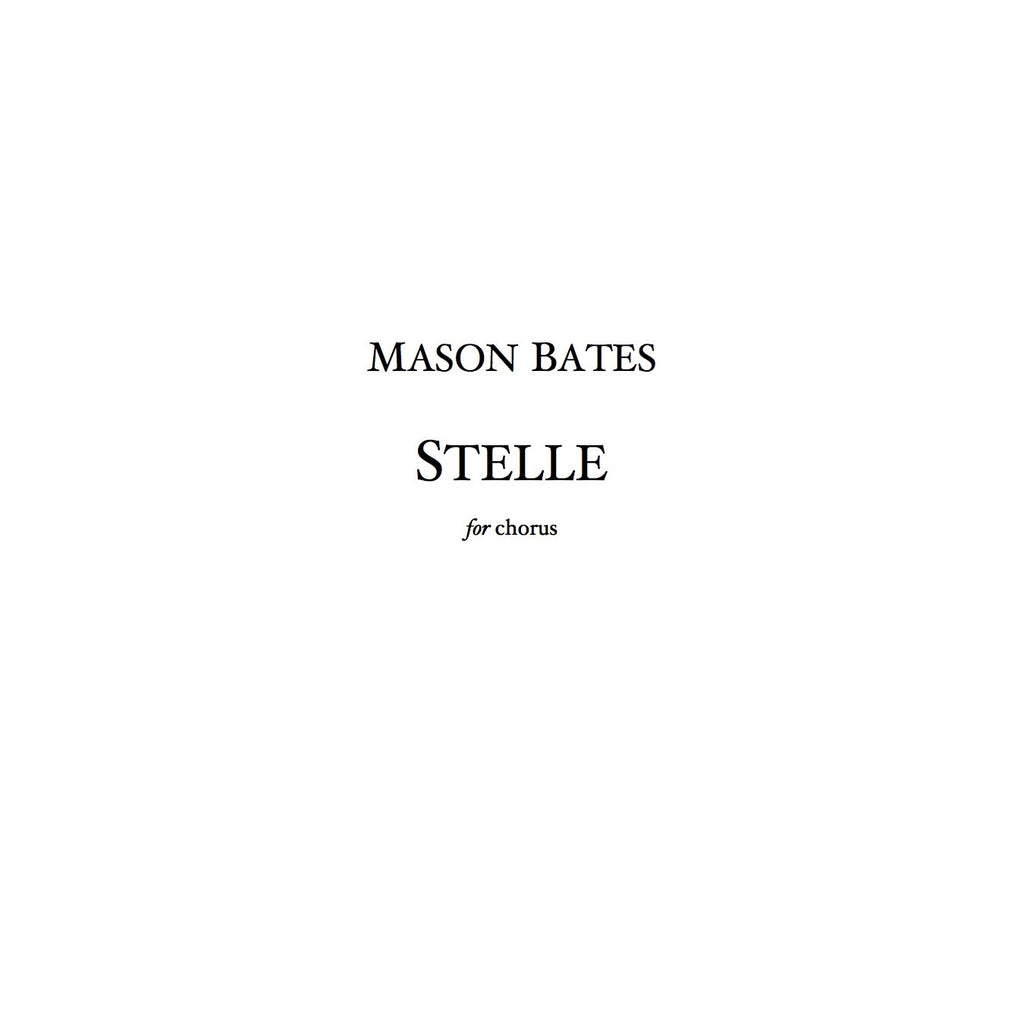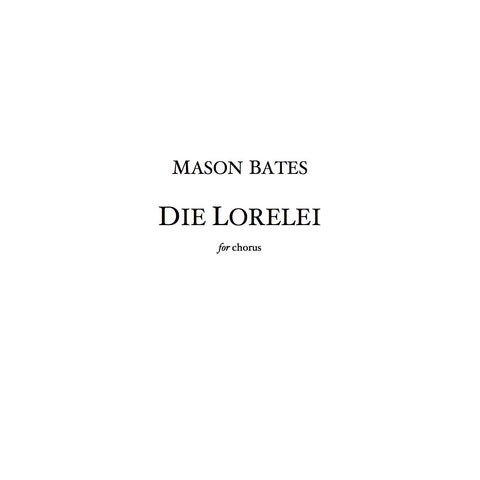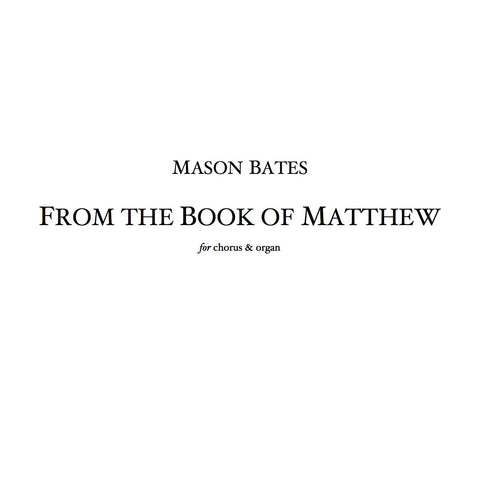Stelle
$ 5.00
from Sirens for 12-part a cappella chorus
Approximate Duration: 2:15'
I. from The Odyssey (Book XII)
II. Die Lorelei (Heinrich Heine)
III. “Stelle, vostra mercè l’eccelse sfere” (Pietro Aretino)
IV. “Sirinu nuqa rikuni a” (native Quechua)
V. from The Book of Matthew
VI. from The Odyssey (Book XII)
Buy on iTunes: https://itunes.apple.com/us/album/interlude-siren-music-interlude/id323320911?i=323322100&ign-mpt=uo%3D4
PROGRAM NOTES
The sirens, those mythical beings of the island of Circe, occupy a unique place in literature. Unlike other temptresses, their lure is art, a song of such overpowering beauty that it draws sailors to a rocky death. In contemplating a large work for Chanticleer, I imagined alluring and haunting music that would fully explore their special gifts.
Perhaps one thinks of lyrical, melodic music coming from sirens, but this cycle casts a wide net in exploring seduction music. For example, the hypnotic and pulsing can also entrance, and this is the music that floats across the ocean to Odysseus in the work’s beginning and end. The shattered Greek words from Book XII of the Odyssey weave an intricate, bewitching mosaic. The rhythms soften in a central, lyrical section marked by melting portamento, but the eerie tapestry of rhythms returns in the end, with Odysseus’s fractured name floating distantly away. This is followed by the simpler and more direct re-telling of the famed Lorelei, a 19th Century German tale about a siren singing atop a riverside rock. The strophic form of Heine’s poem is reflected in the music, which nods to his century’s musical conventions, but the piece dissolves into a trance at the mention of her “strange, powerful melody.” As the melancholic narrator tells us, both fisher and boat are never seen again.
But sirens do not always involve danger, and in fact sometimes they are personified as pure, heavenly beings emanating harmonious music. Pietro Aretino’s 16th-Century sonnet, a love poem in one breath, pays homage to the stars (“Stelle”), who are each blessed with a lovely siren atop them. This celestial setting gives way, in the central piece of the cycle, to the earthy and rich world of the indigenous South American people. The Quechua Indians associated sirens (“Sirinu”) with equal parts mystery, temptation, and magic. Sitting in a rainy hollow, our sleepy narrator tells of the sudden appearance of a beguiling, singing siren of indefinite color. The dreamy music of the opening soon turns into a bluesy, ritualistic dance when the siren begins its song. But even when the siren disappears, the half-asleep narrator still cannot rid his mind of its strange song.
The cycle goes furthest afield, at least on the dramatic level, in the inclusion of Christ’s calling of the first disciples from the Book of Matthew. Fishing on the Sea of Galilee, Peter and Andrew are approached by Christ, who offers perhaps the most intriguing (and haunting) line in history: “Come, follow me, and I will teach you to be fishers of men.” The meditative, highly static music of the fishermen breaks from its confines when Jesus speaks.
Many thanks to Joseph Jennings and Chanticleer, who navigate a linguistic minefield of five languages in bringing this to life. In addition, poet Ron Smith deserves very special thanks. My high school literary mentor, he suggested that I take my starting text (the fisherman of souls passage) and apply it to siren imagery, and I am thankful his teaching still pays great dividends. For pronunciation help, many thanks to Yiorgos Vassilandonakis, Filipo Andrei, Katra Byram, and especially to Zoila Mendoza, who very generously walked me through the nuances of Quechua.




